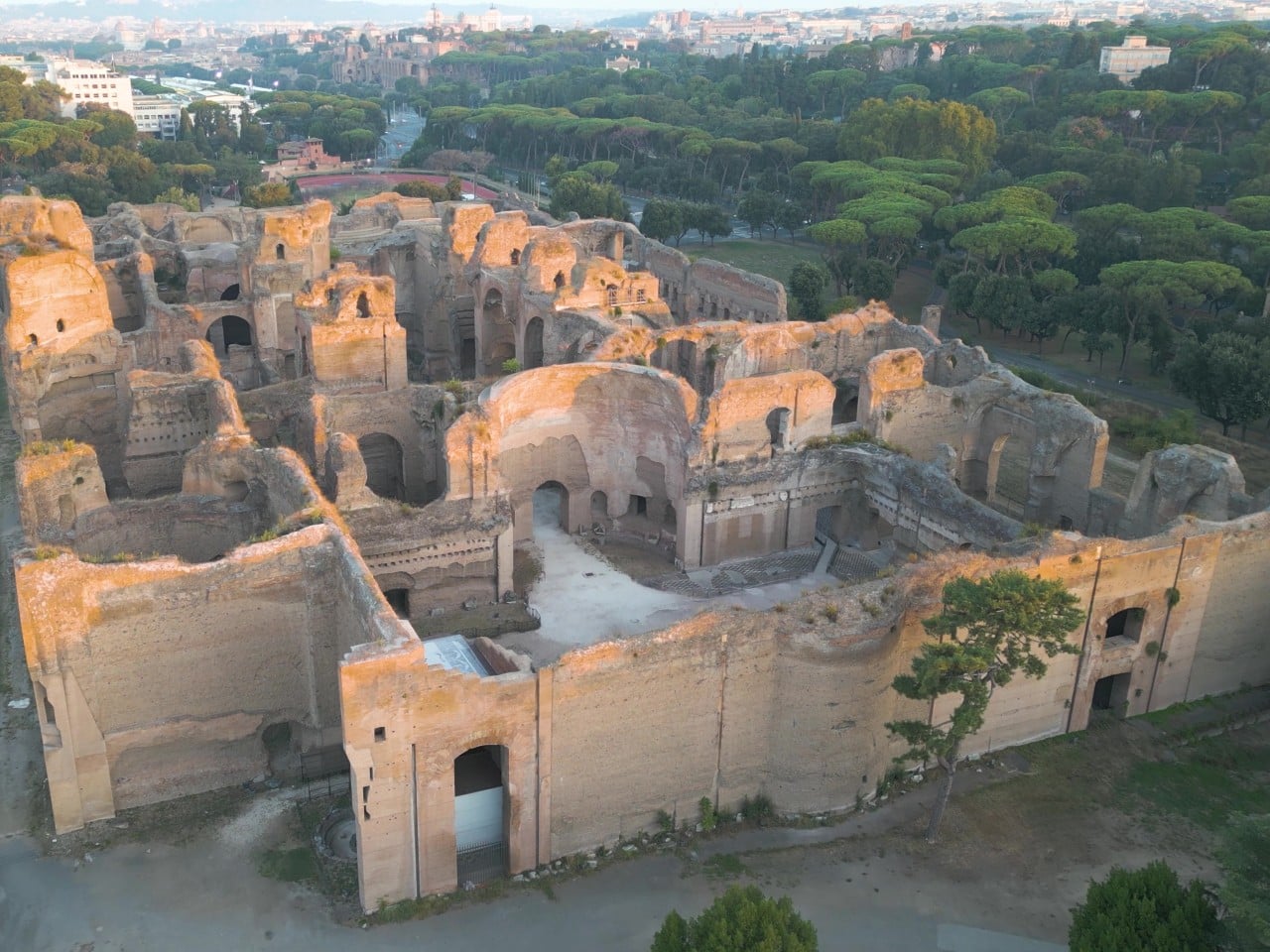
Roman architectural style spanned from 509 BC to roughly the 4th century AD where the buildings drew inspiration from classical Greek design and created a distinct design style. Although Greek and Roman architecture forms a part of classical architecture, the buildings of the Roman design style used innovative materials like concrete alongside advanced techniques in the construction of arches and domes resulting in structurally robust structures.
Image courtesy of: BlackBoxGuild
Characteristics of Roman Architectural Style
• Monumental Scale: The magnificent scale of buildings like the Colosseum, Pantheon, Temples of Baalbek, and Baths of Caracalla is a testament to the monumental scale and grandeur of the Roman Empire.

• Symmetrical Design: The Romans used to employ strict axial symmetry that gave rise to a monumental scale. Most of the buildings worked around exact proportions to imbue a sense of beauty, harmony, and balance in their style.
• Use of Columns and Orders: In Roman architecture, an “Order” denotes a distinct style and system of proportions used in constructing structures like temples or basilicas, dictating column height, roof design, and appearance.
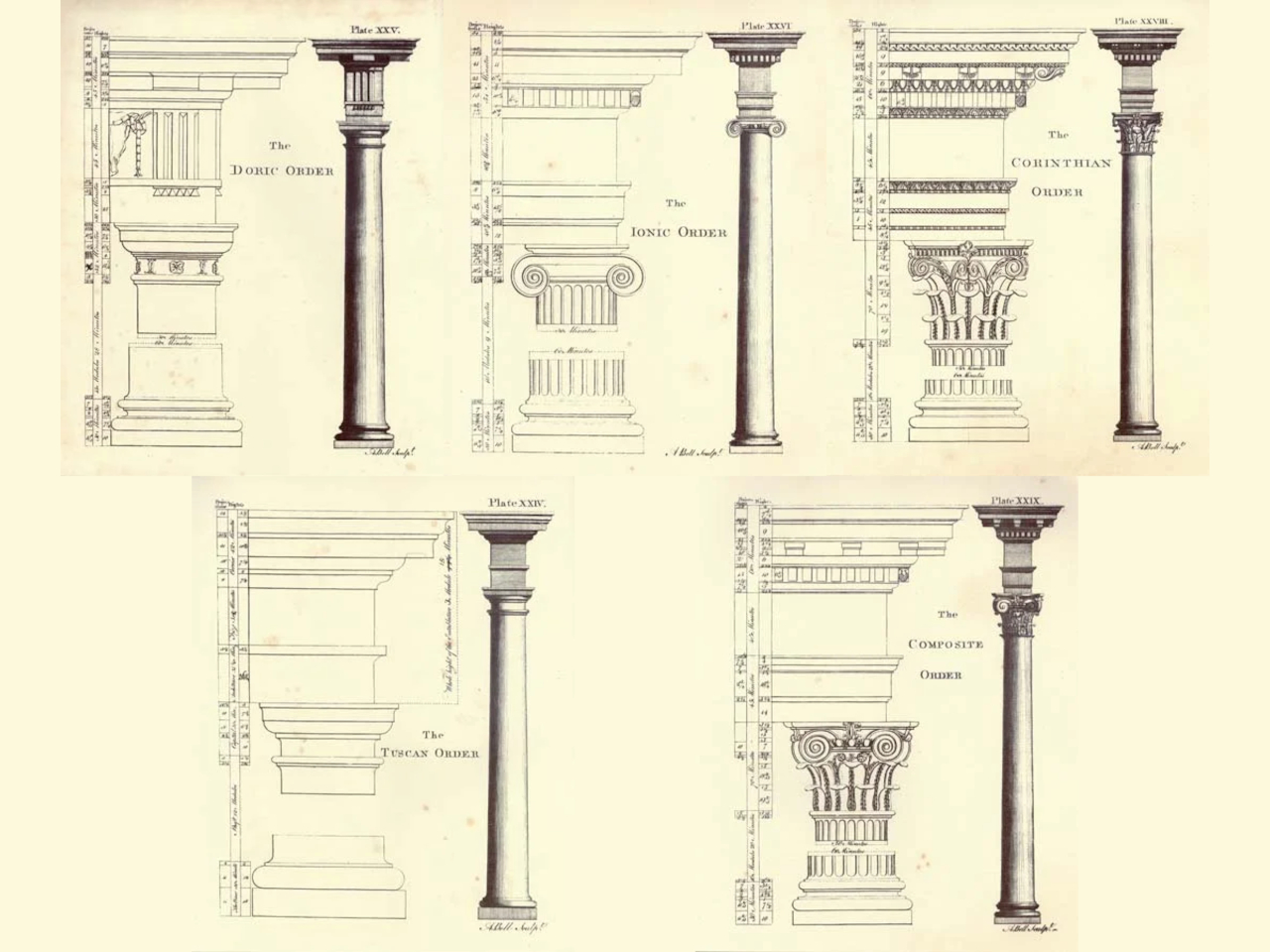
Images courtesy of: Encylopedia Britannica
There are five Roman Orders, known as the “Five Classical Orders of Architecture,” each with a distinctive appearance and size. The identification of each order is often based on the column capital’s design, while the order also determines the height and appearance of sections above the columns. The five orders of columns in classical Roman architecture include Tuscan, Doric, Ionic, Corinthian, and Composite.
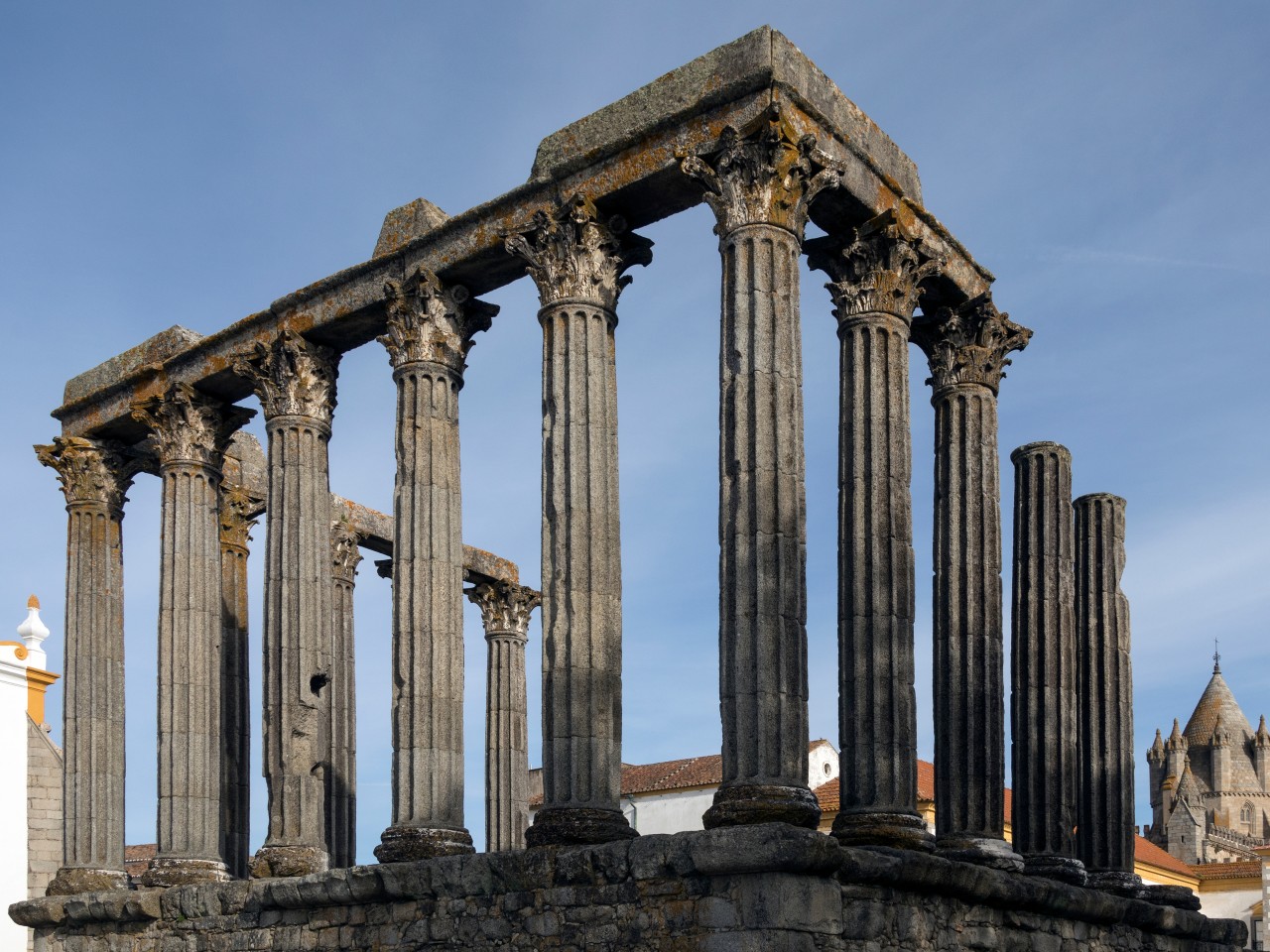
Image courtesy of: SteveAllenPhoto999
• Use of Brick and Concrete: The Romans experimented with the innovative use of construction materials. Bricks were combined with concrete to create durable buildings.
• Ornate Design: Roman architecture reflects a classical style that is beautified with ornamental design elements like carvings, mosaics, frescoes, and sculptures that elevate the overall aesthetic of the exteriors and interiors.
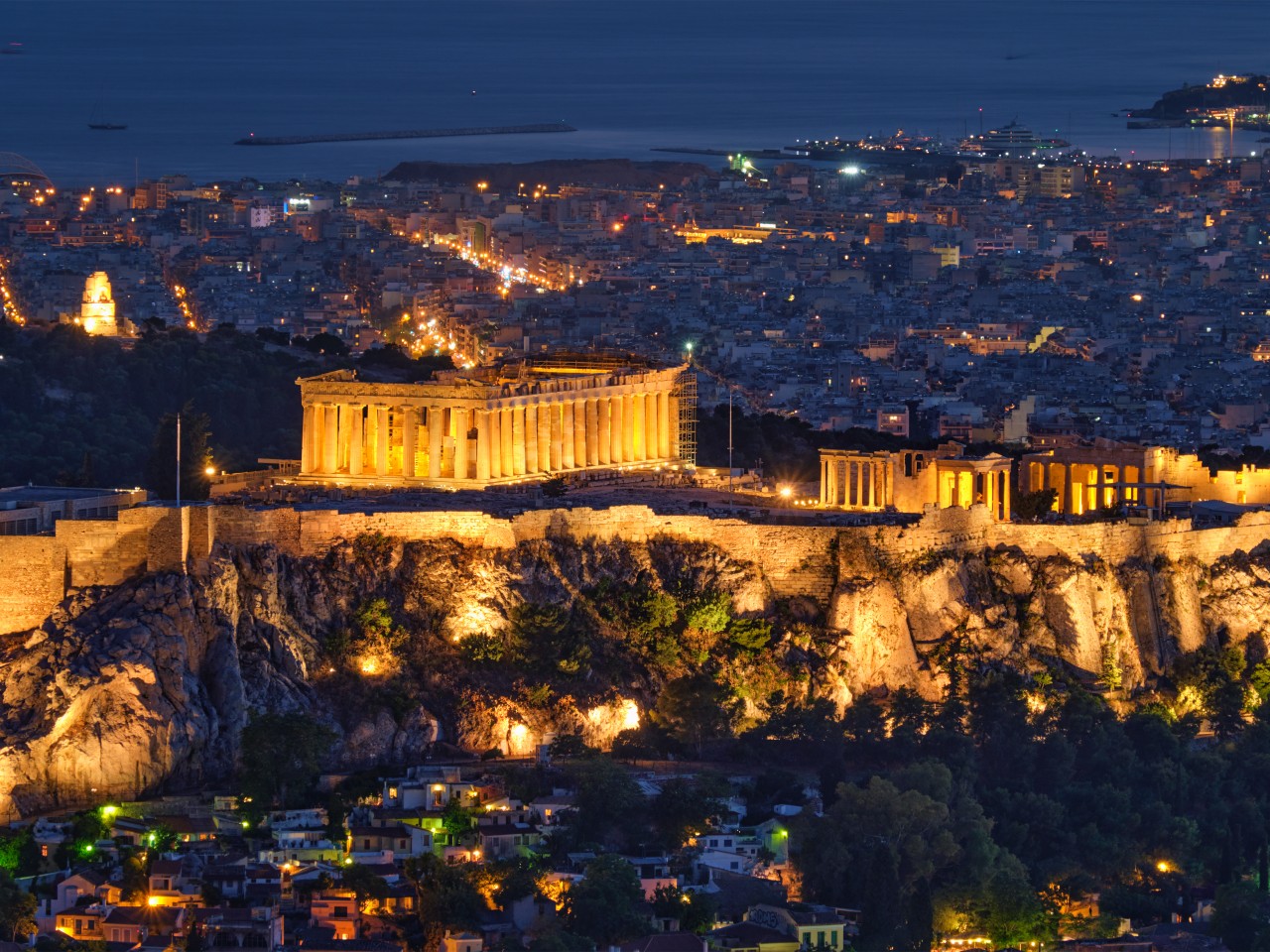
Image courtesy of: Dmitry_Rukhlenko
• Design of Public Spaces: The Romans paid a lot of attention to public spaces which included amphitheaters, basilicas, forums, baths, aqueducts, and road networks. All these buildings were built for trade, infrastructure, and leisure.
• Advanced Engineering: The Romans were advanced and were pioneers in various fields. They constructed numerous facilities like aqueducts, to supply resources to the city. Their creation of pozzolana cement remains among the most robust and enduring cement to this day.
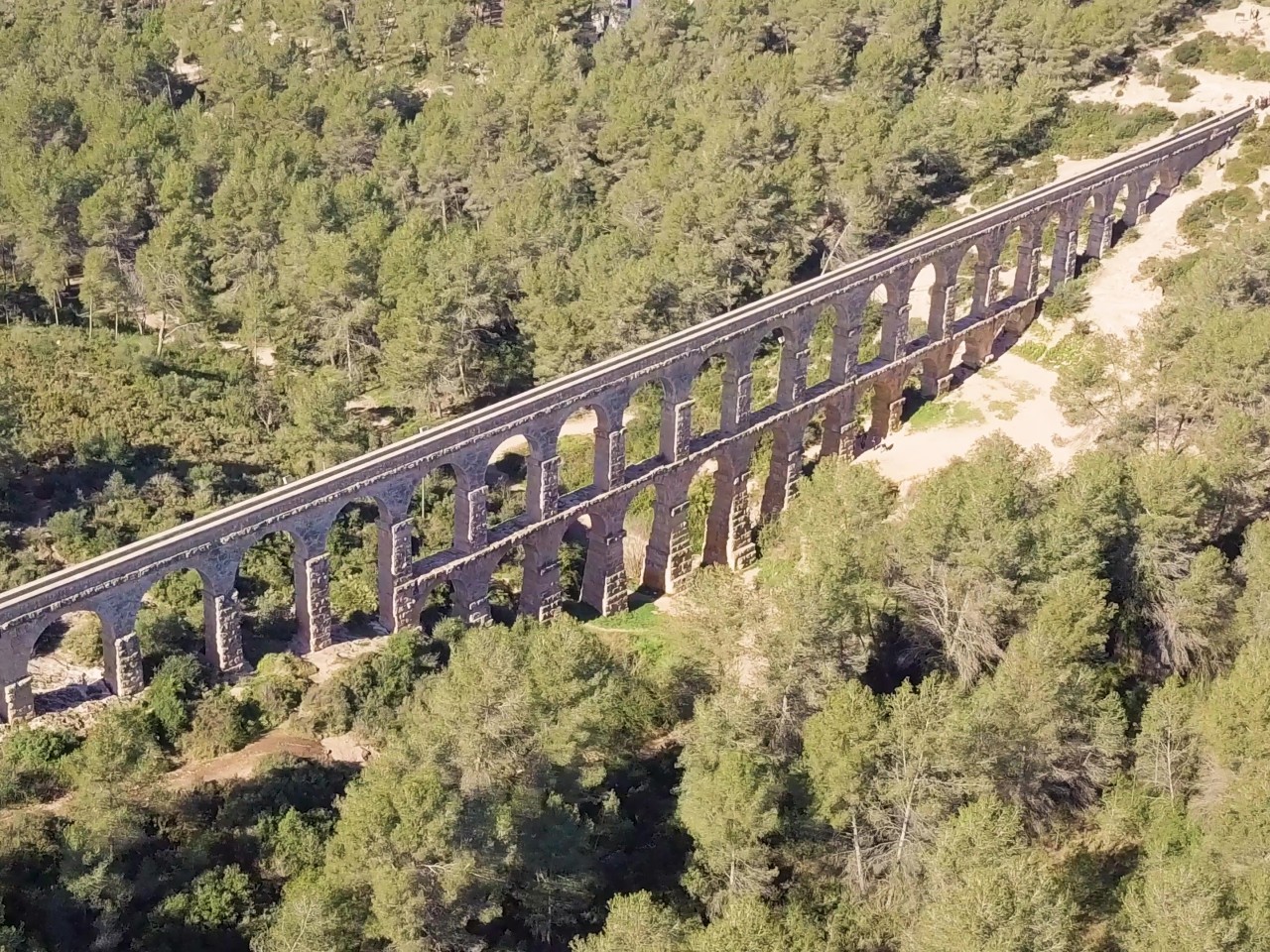
Image courtesy of: BlackBoxGuild
Types of Buildings and Structures in Ancient Rome
• Amphitheatre
In Ancient Rome, amphitheaters were circular open-air theaters with elevated seating that were used for hosting a variety of public events like gladiator battles and executions. They featured ornate facades with marble or stucco decorations.
• Temples
Being a polytheistic society characterized by the belief or worship of more than one God, the Romans erected multiple temples dedicated to various deities.
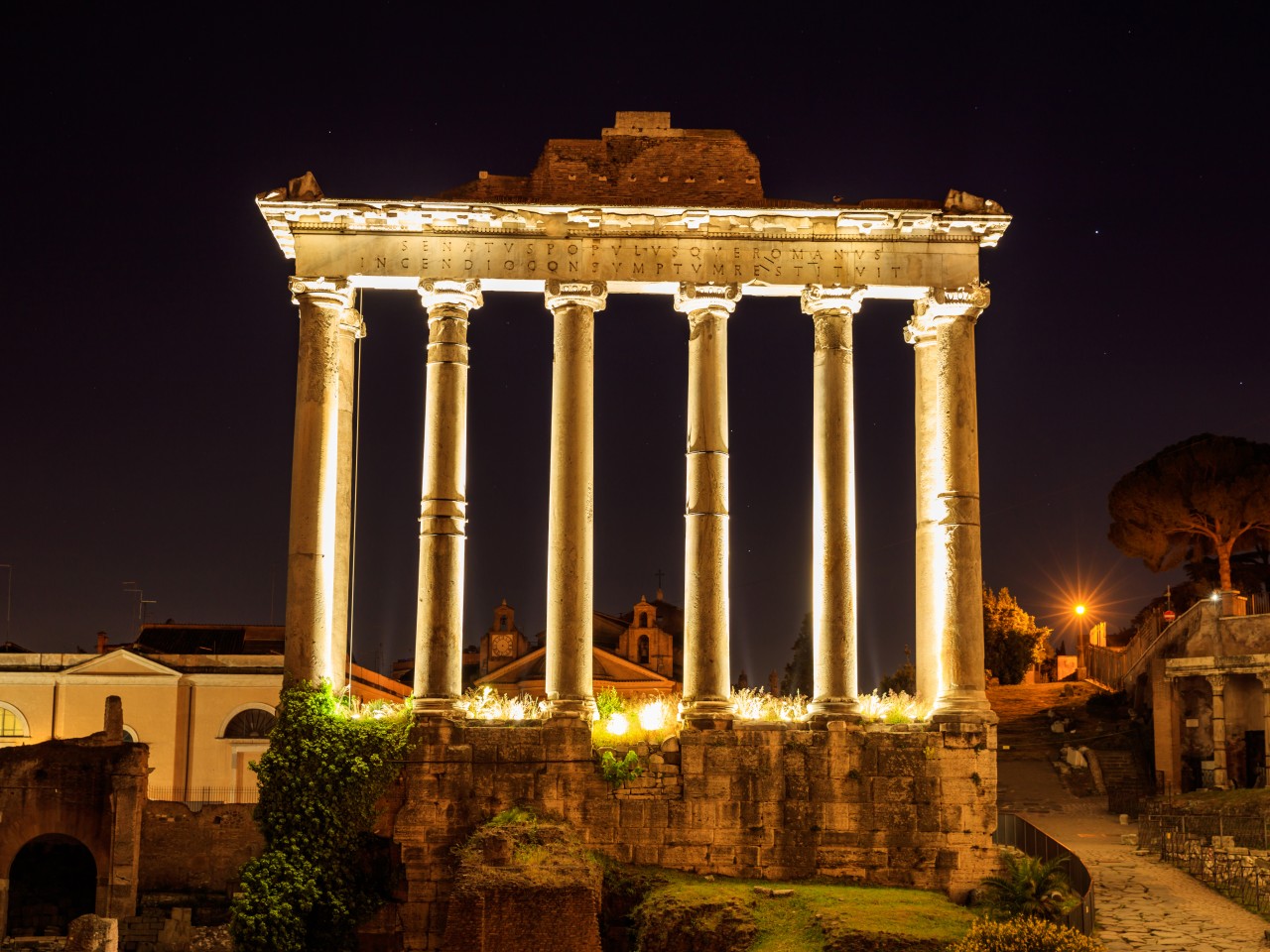
Image courtesy of: rawf8
• Aqueduct
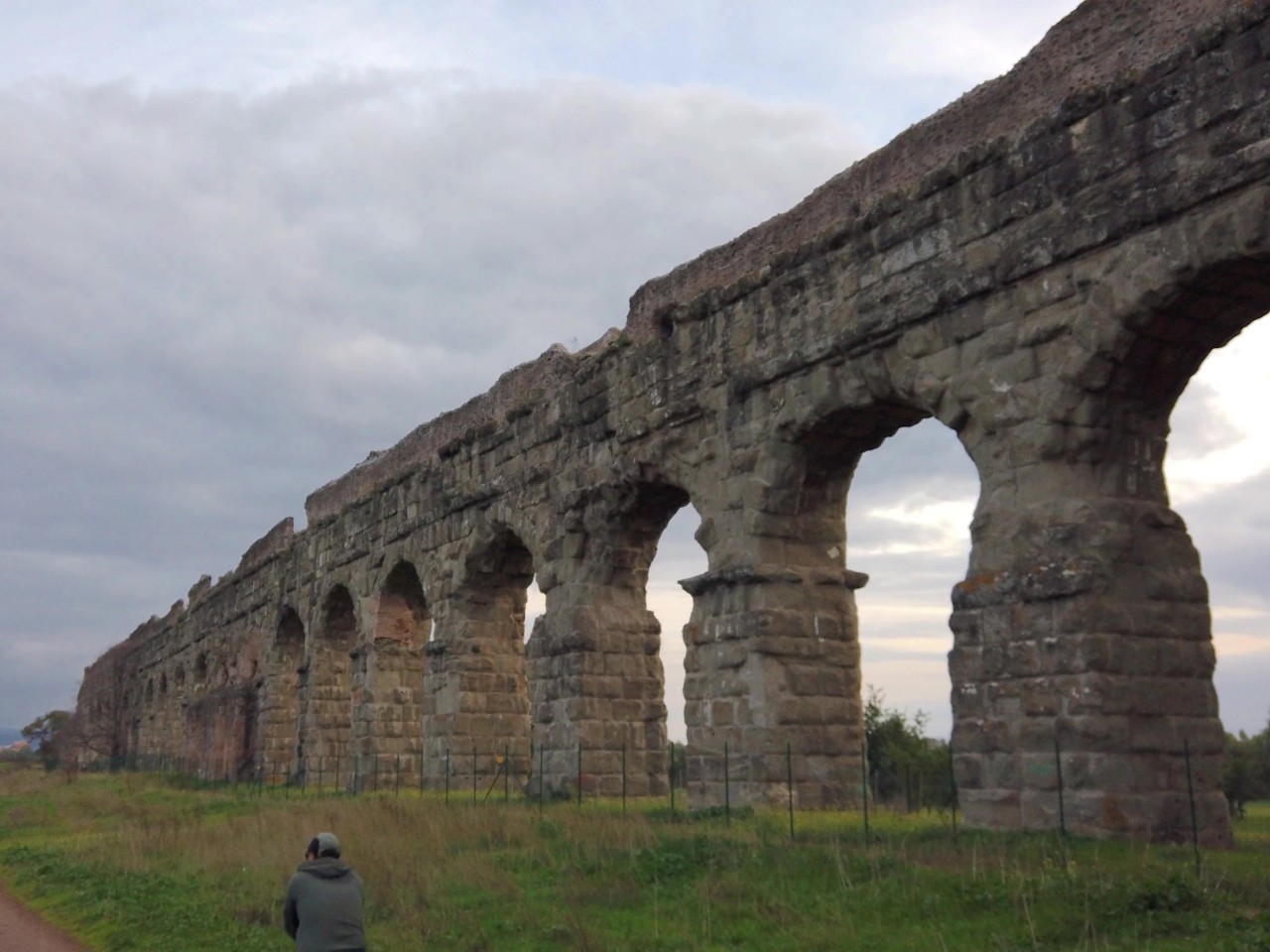
Image courtesy of: BlackBoxGuild
Renowned for one of the most remarkable engineering achievements in ancient history, the Romans are often praised for building intricate aqueduct systems that transported clean water to different parts of their empire.
• Baths
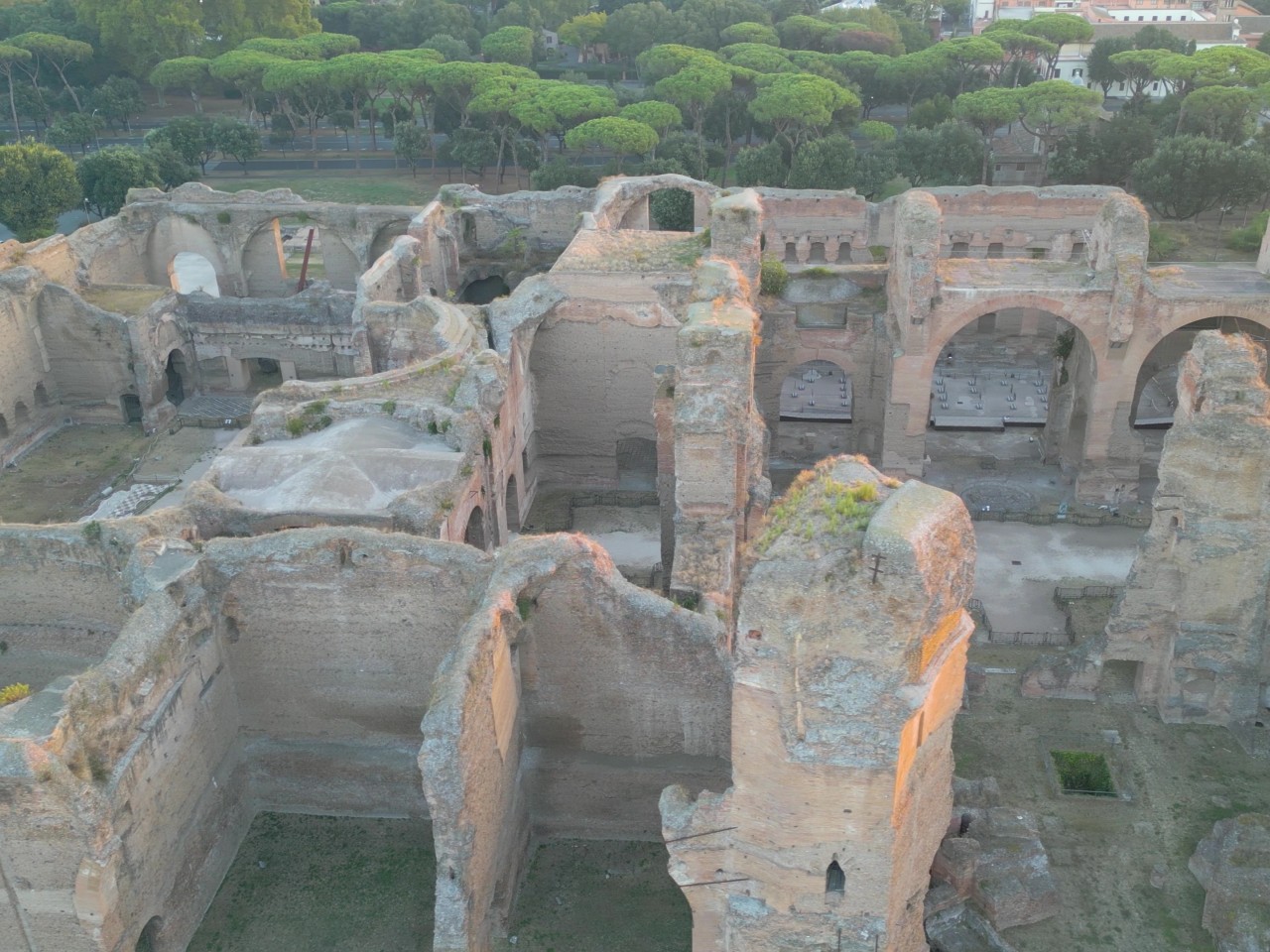
Image courtesy of: BlackBoxGuild
Roman society placed great importance on open-air communal baths. “Thermae,” derived from the Greek “thermos” meaning “hot,” typically denoted extensive, imperial complexes, while “Balneae” referred to smaller public or private bathing facilities.
• Triumphal Arches
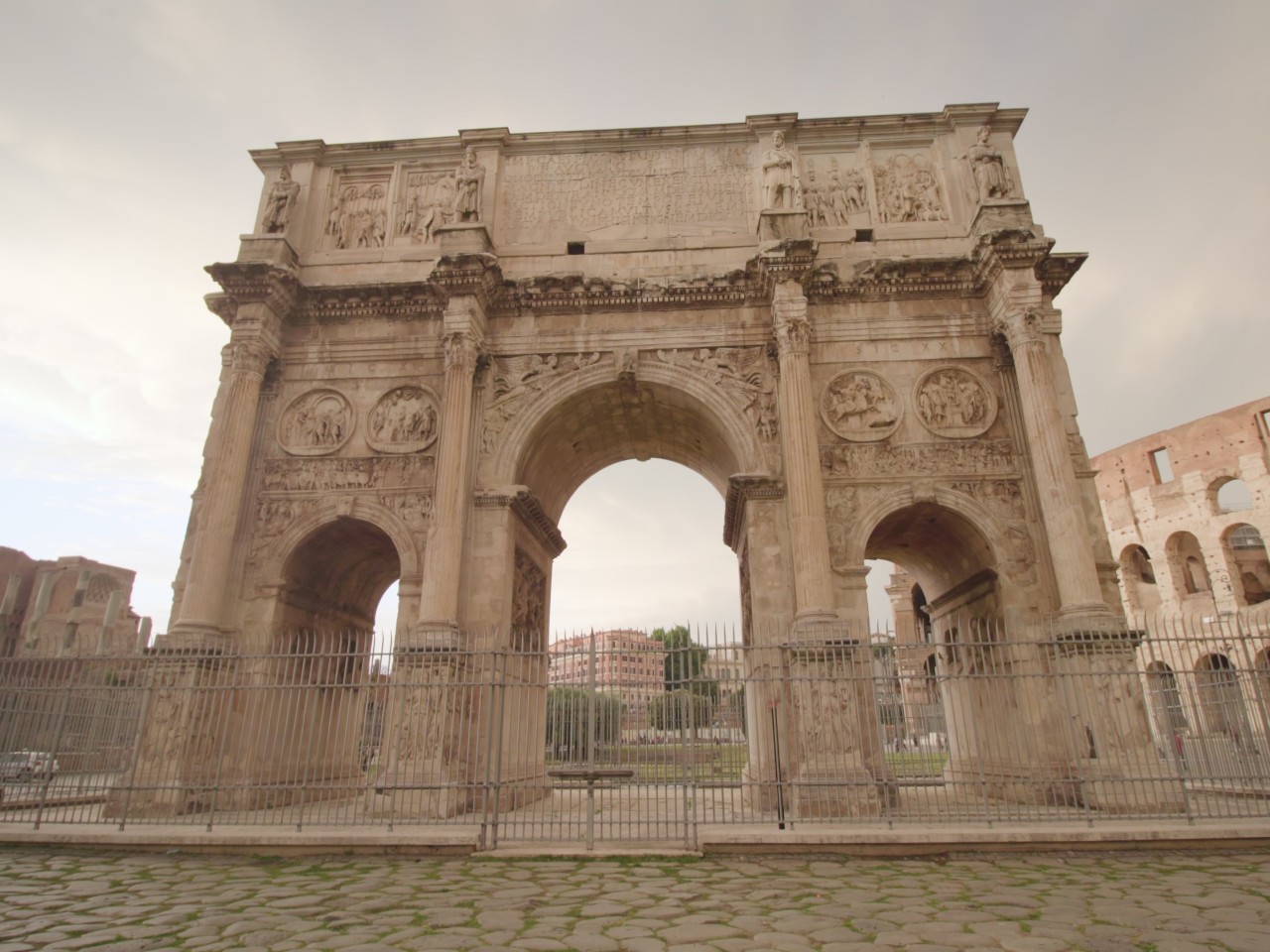
Image courtesy of: Kmeel_films
Constructed to commemorate significant events or individuals, triumphal arches were prevalent across the Empire. Only three triumphal arches remain in Rome namely the Arch of Titus, the Arch of Septimius Severus, and the Arch of Constantine.
Top Ten Buildings of Ancient Rome
Key figures involved in the construction of ancient Rome or the heart of the Roman Empire, included Marcus Vitruvius Pollio, Apollodorus of Damascus, and Emperor Hadrian. Some of the renowned buildings from Roman architecture include:
1. Roman Colosseum
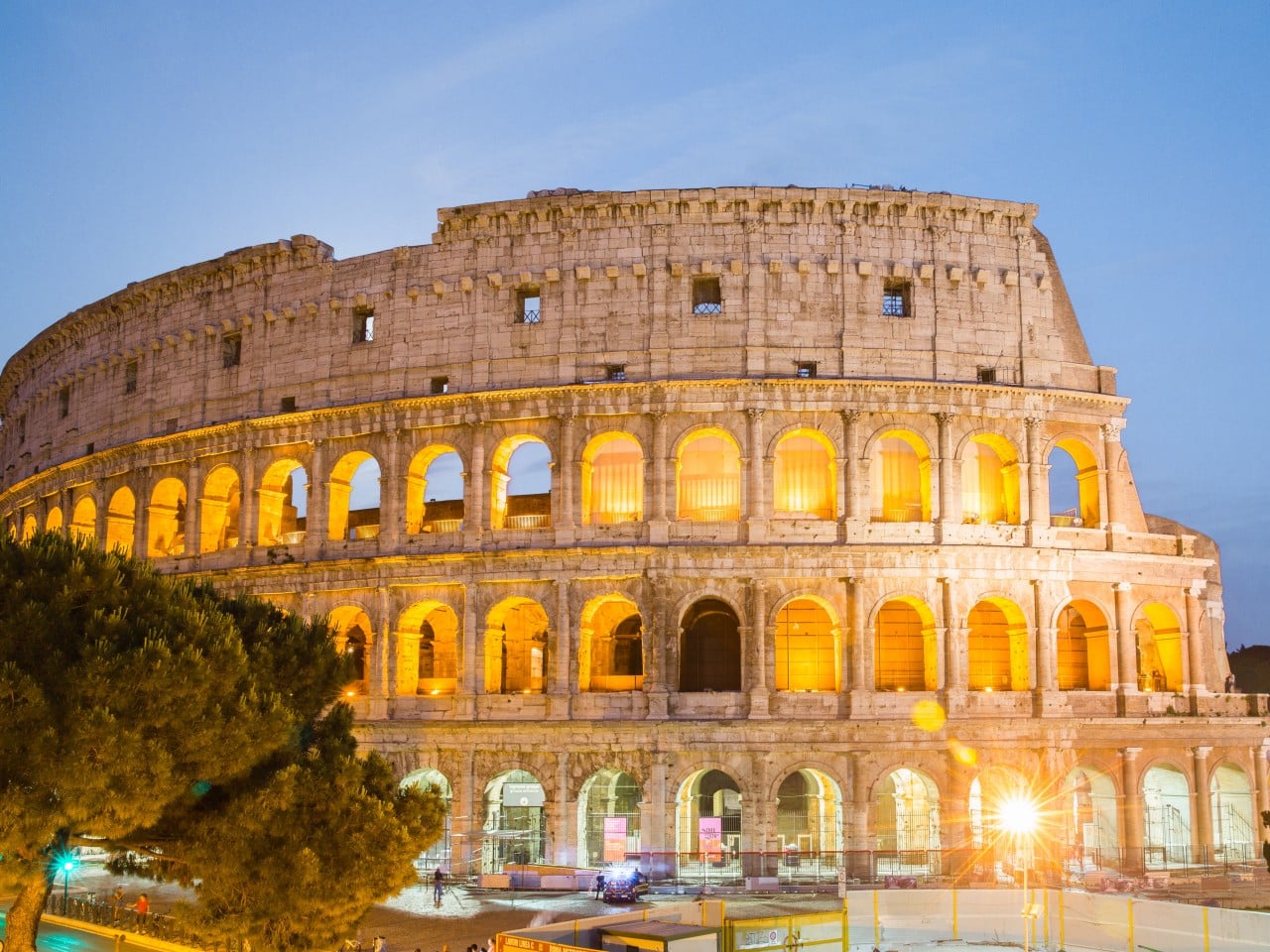
Image courtesy of: heatherdeffense
The colossal Colosseum, was started by Emperor Vespasian in 72 AD and completed by his son Titus in 80 AD. With a seating capacity exceeding 50,000, it featured up to 80 entrances due to its ability to host vast audiences.
2. Pantheon
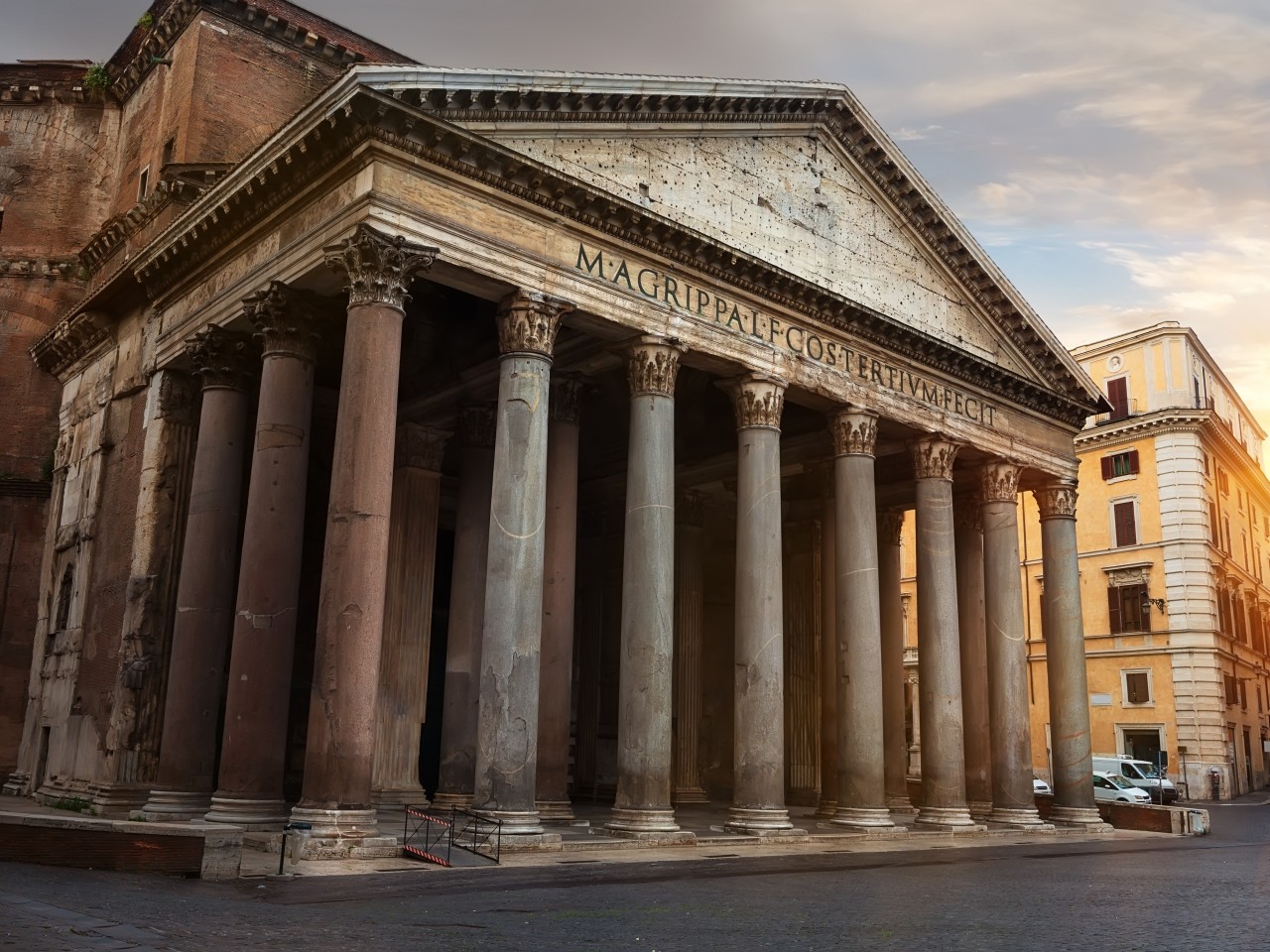
Image courtesy of: Givaga
The Pantheon, an exceptionally preserved ancient Roman marvel, was dedicated to all Roman gods and completed in 125 AD under Hadrian’s rule. It features a grand circular portico leading to a magnificent dome-covered rotunda and is a testament to Roman architectural and engineering prowess, enduring over 2,000 years of wear and tear.
3. Amphitheater, Nimes
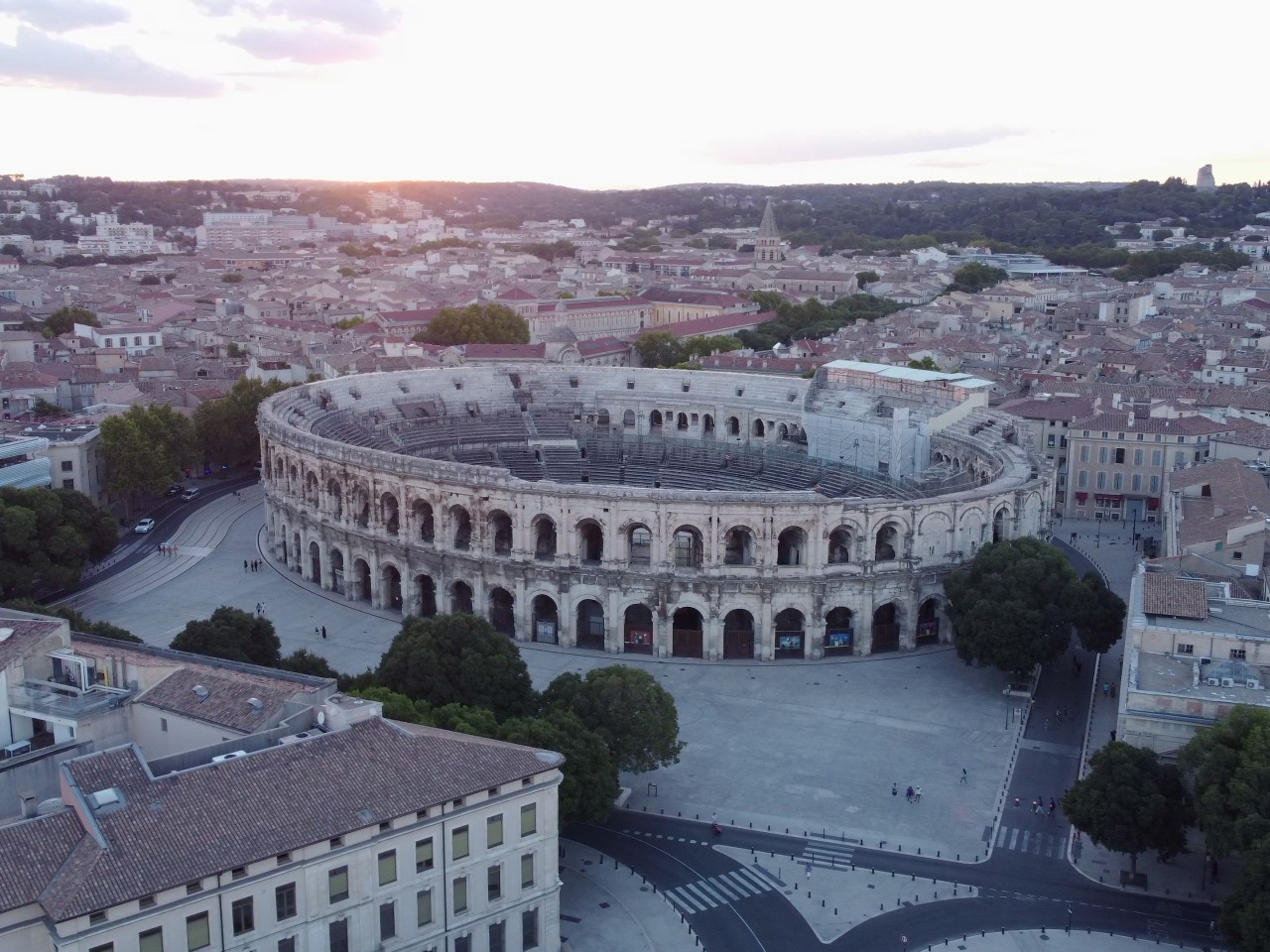
Image courtesy of: BlackBoxGuild
Built in the city of Nemausus (present-day Nîmes), the Arena of Nimes, one of Gaul’s largest amphitheaters with a seating capacity of around 24,000, was initially used as a theater. In the Middle Ages, a palace was constructed inside it, and in 1863, it was transformed into a bullring, where annual bullfights continued to take place.
4. Maison Carrée
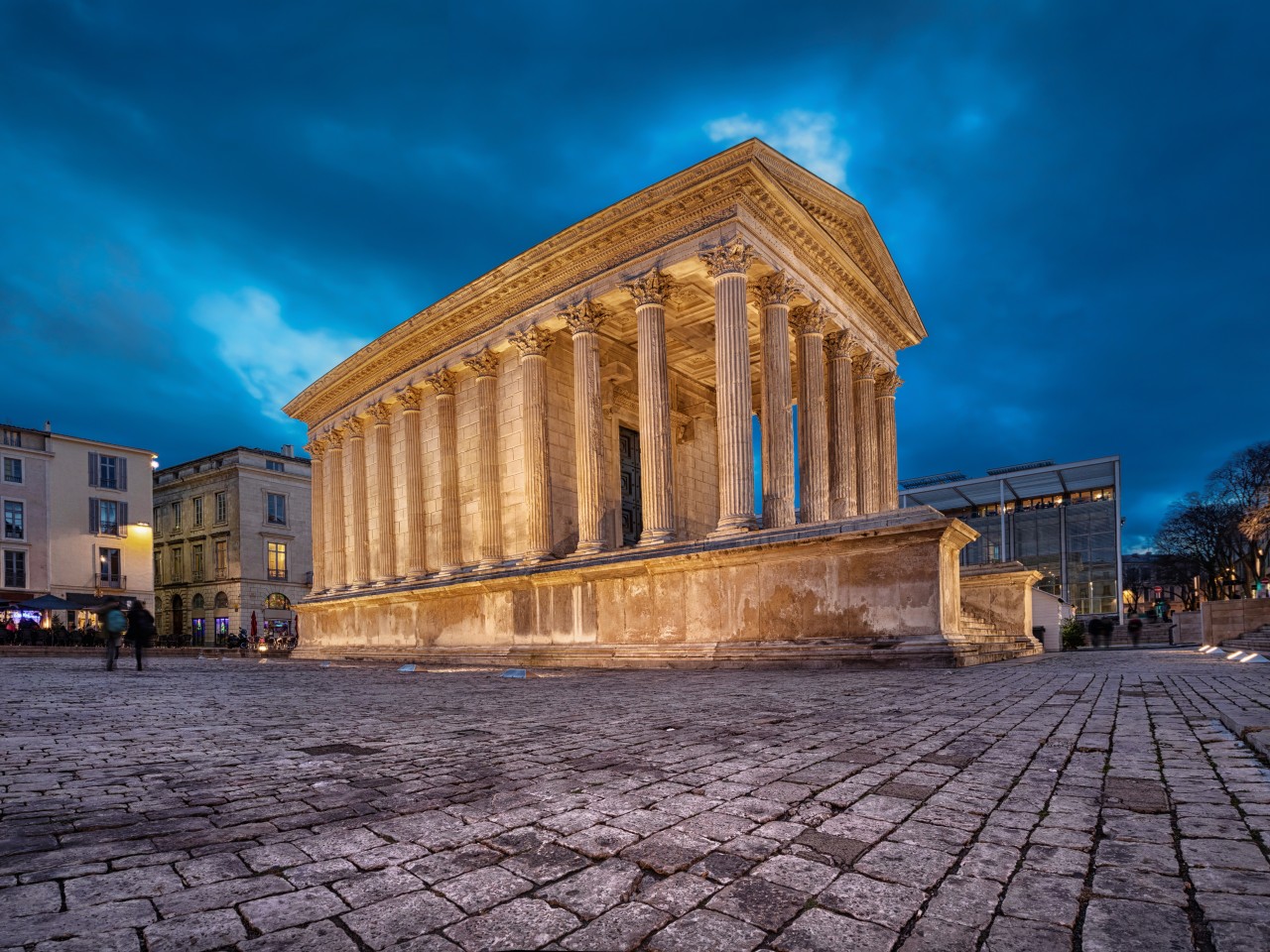
Image courtesy of: bbsferrari
Maison Carrée was built around 16 BC in Nimes, it stands at 49 feet (15 meters) tall and 85 feet (26 meters) long, it was erected by Roman General Marcus Vipanius Agrippa in memory of his sons. Converted into a Christian church in the fourth century, it escaped the fate of many Roman monuments, serving various roles over the centuries, including the town hall and storehouse, and now functions as a museum.
5. Aqueduct of Segovia
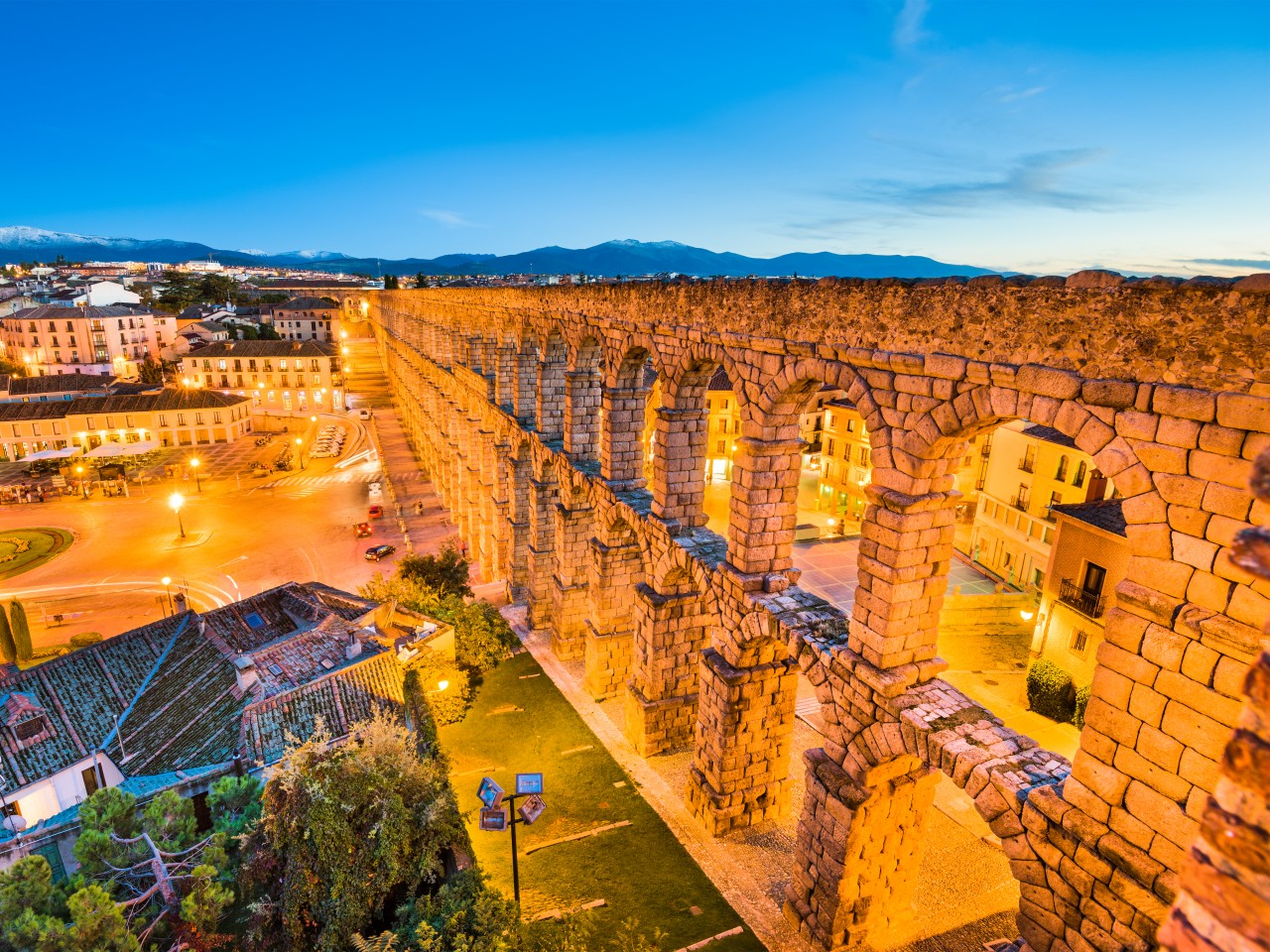
Image courtesy of: SeanPavone
The Aqueduct of Segovia, on the Iberian Peninsula, is an exceptionally well-preserved Roman construction from around 50 AD. Stretching over 16 km and made from 24,000 granite blocks, this 165-arch marvel transported water to Segovia. With its mortarless design and 30-foot (9-meter) arches, it symbolizes the city’s heritage.
6. Diocletian’s Palace
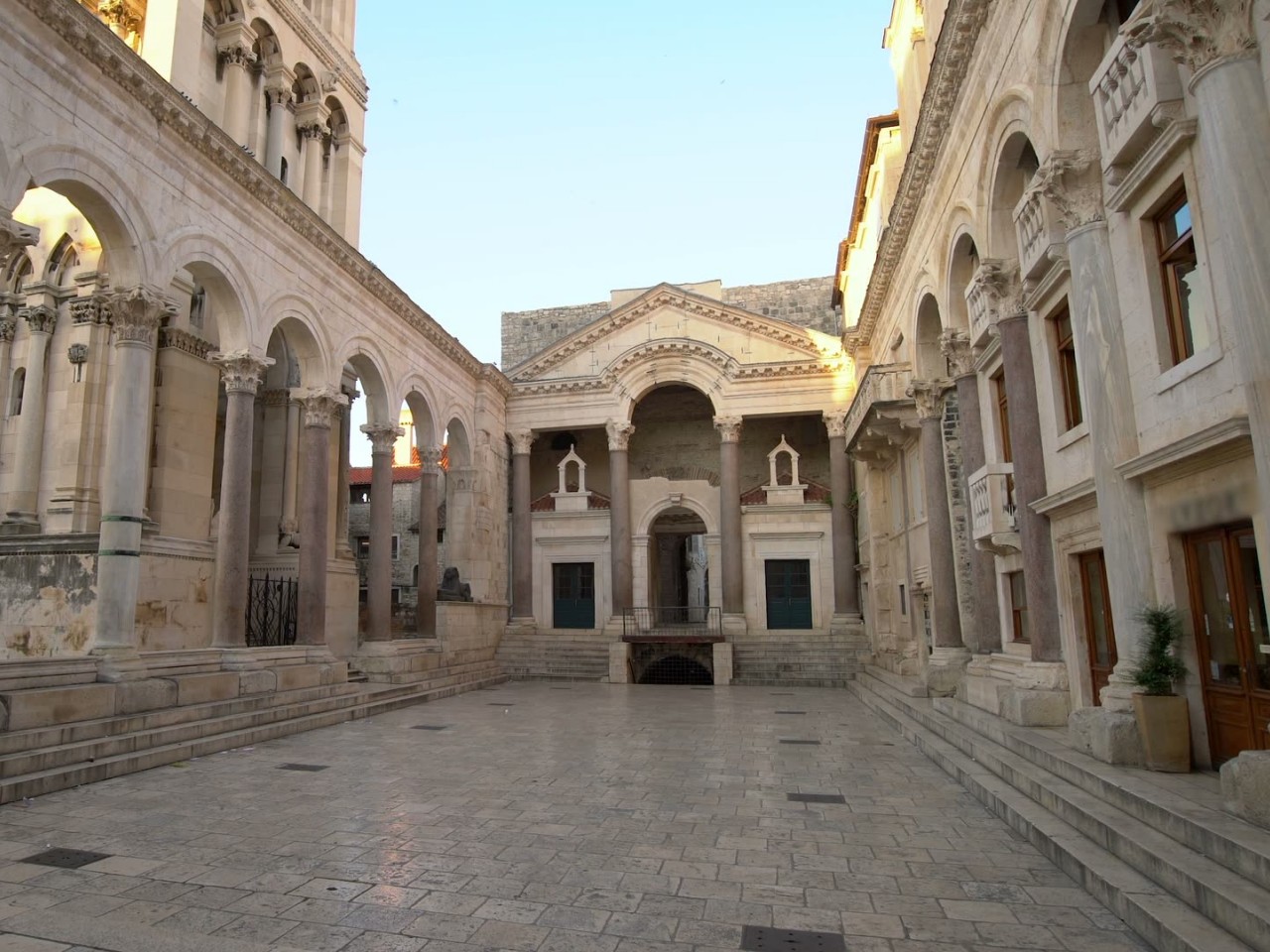
Image courtesy of: DigineeringCreations
Roman Emperor Diocletian commissioned this impressive palace for his retirement in 305 AD, where he spent his post-reign life. The palace, spanning 705 feet (215 meters) from east to west with 85-foot (26-meter) high walls, reflects architectural styles from different eras. Its use as a cathedral in the Middle Ages helped maintain its structural integrity, and it’s now a renowned archaeological site and UNESCO World Heritage site.
7. Pont du Gard
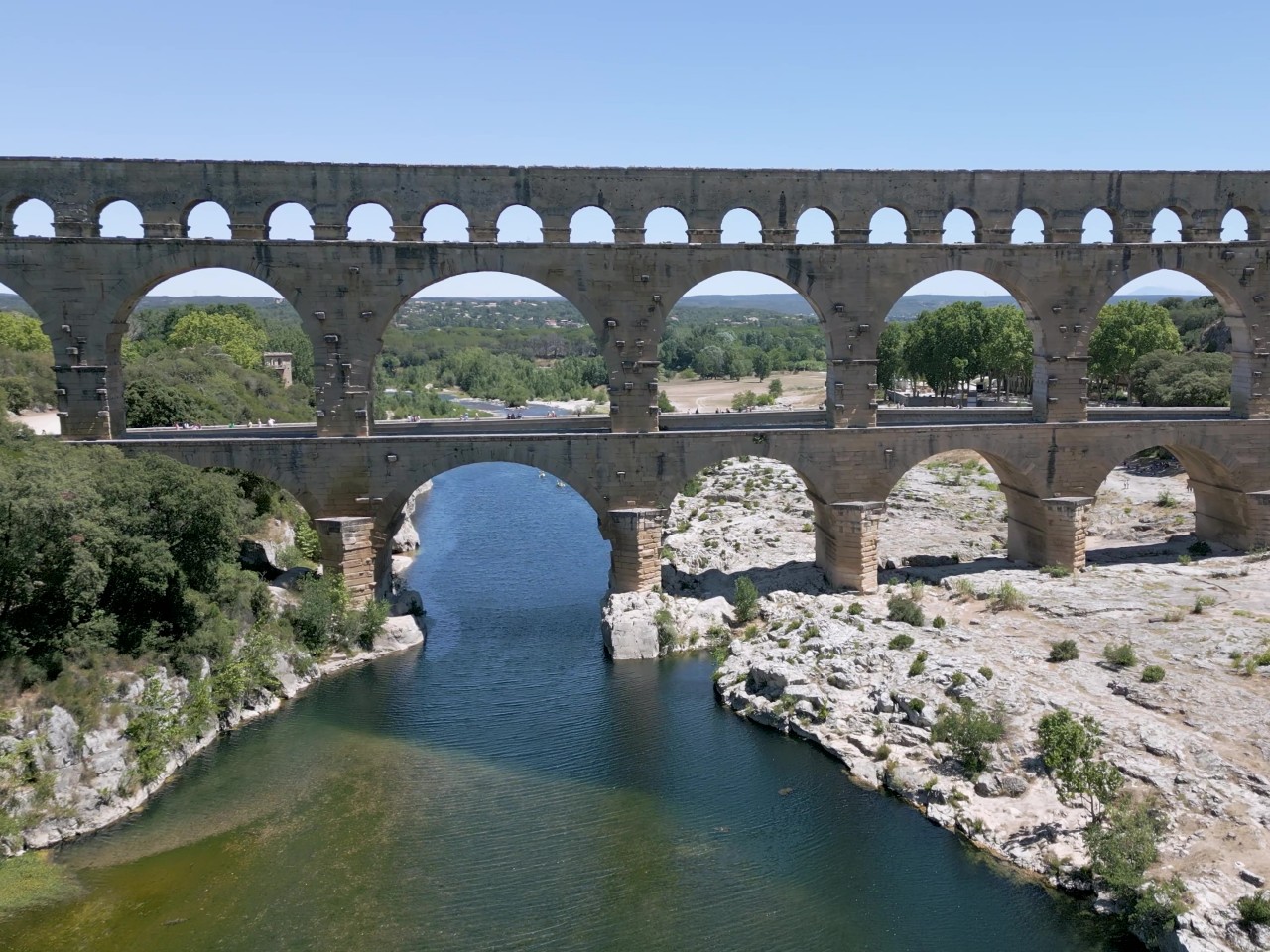
Image courtesy of: PD-media
The Pont du Gard is a Roman aqueduct built without mortar in 1st-century AD southern France, featuring three stories of precisely cut stone blocks. It’s a pivotal structure in a 31-mile aqueduct supplying water to Nimes and has served as a bridge from the Middle Ages to the 18th century.
8. Library of Celsus
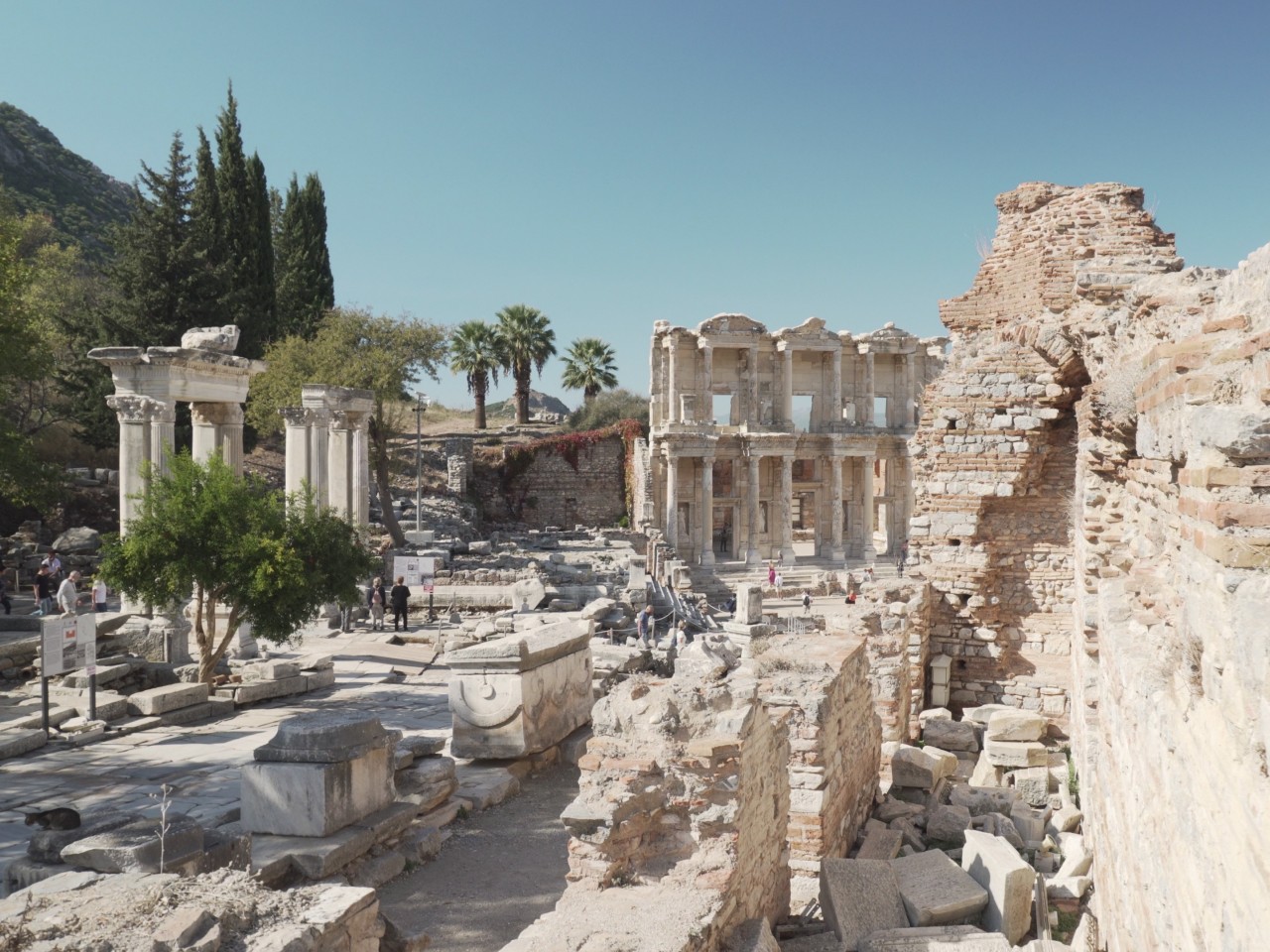
Image courtesy of: tolshin
The Library of Celsus, named after Ephesus’ former governor, Gaius Julius Celsus Polemaeanus, was a monumental tomb commissioned by his son, Galius Julius Aquila. This Roman architectural masterpiece features impressive interiors, exterior designs, and decorations reminiscent of Emperor Hadrian’s era. The building stands on a 69-foot (21-meter) nine-step podium.
9. Arch of Septimius Severus
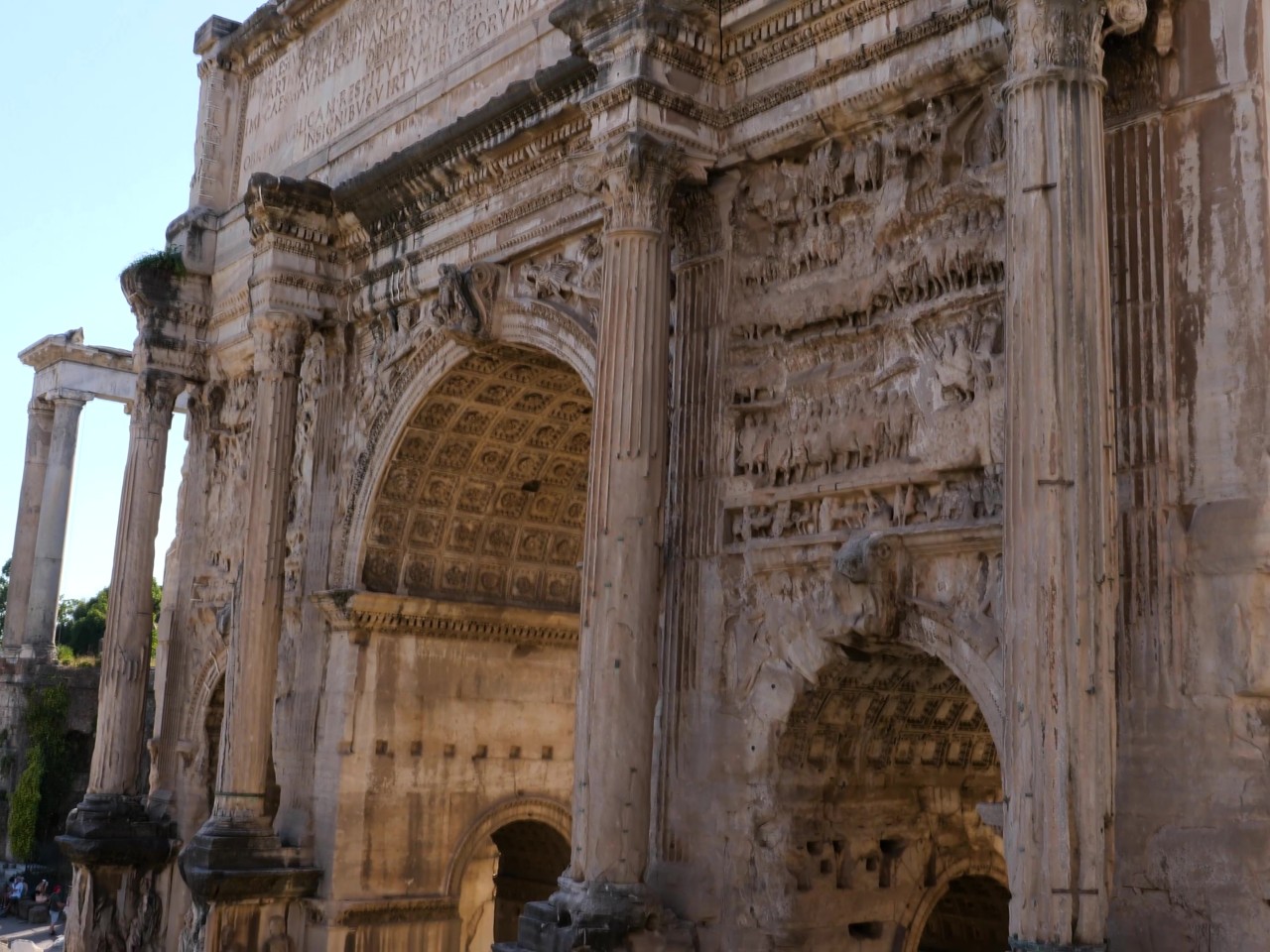
Image courtesy of: BlackBoxGuild
Built in 203 AD to celebrate Roman victories over the Parthians, this triumphal arch commemorated Septimius Severus’ accomplishments, including ending civil wars and defeating the Parthian Empire. Adorned with bronze gilded inscriptions, it recognized Septimius, Caracalla, and Geta for restoring and expanding the Roman Republic. Though damaged, it remains a symbol of Rome’s past glory.
10. Temples of Baalbek
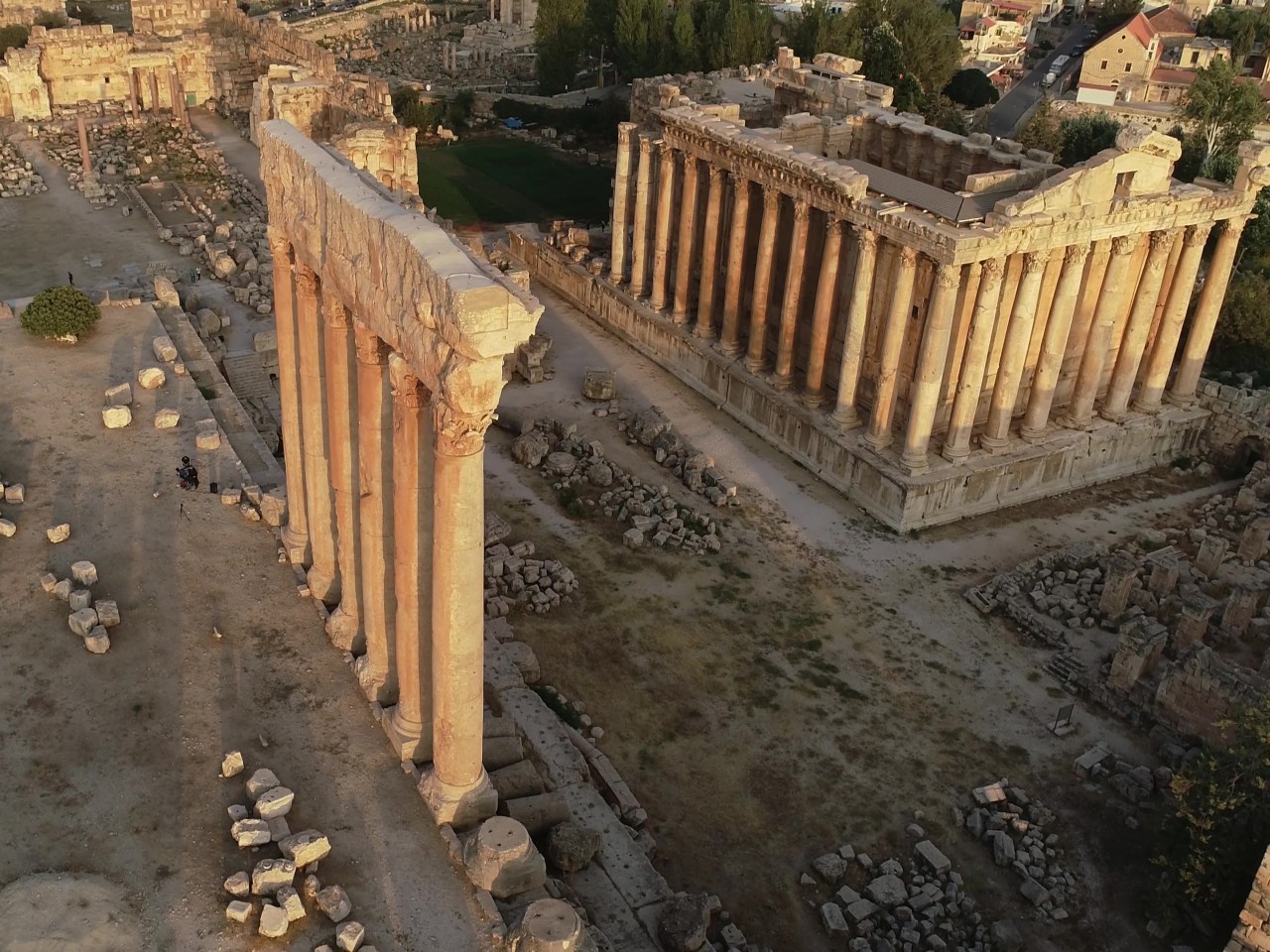
Image courtesy of: BlackBoxGuild
Baalbek, in present-day Lebanon, is a remarkable archaeological site and one of the best-preserved Roman temples in the ancient world. Built from the 1st century BC, four temples were dedicated to gods. The Temple of Jupiter featured 54 colossal granite columns, six of which remain, evoking their grandeur despite centuries of theft, war, and natural disasters.
Rome wasn’t built in a day and the extensive efforts spanning years, and centuries have left a lasting architectural legacy that makes a significant impact in the present day. Also, in recent years, the extensive reach of the Roman Empire has greatly influenced the architecture and infrastructure of numerous nations.
The post Architectural Marvels of Ancient Rome first appeared on Yanko Design.
0 Commentaires